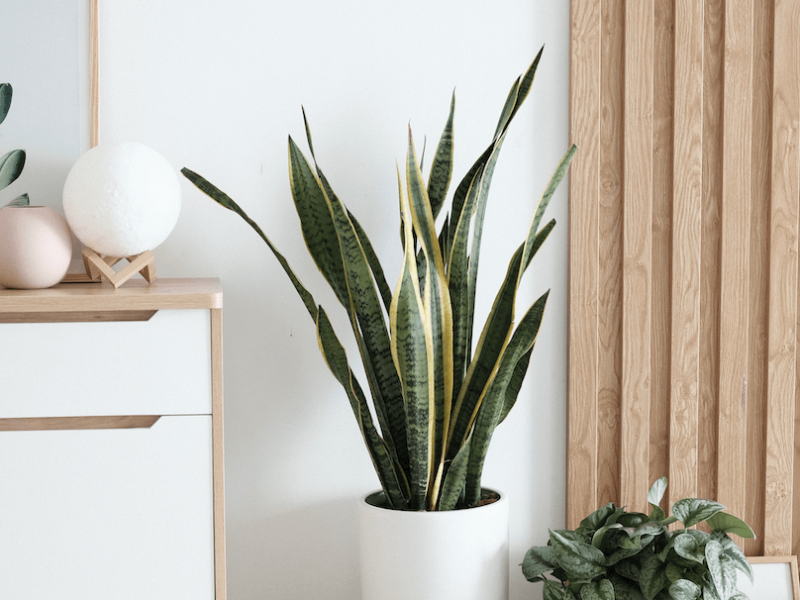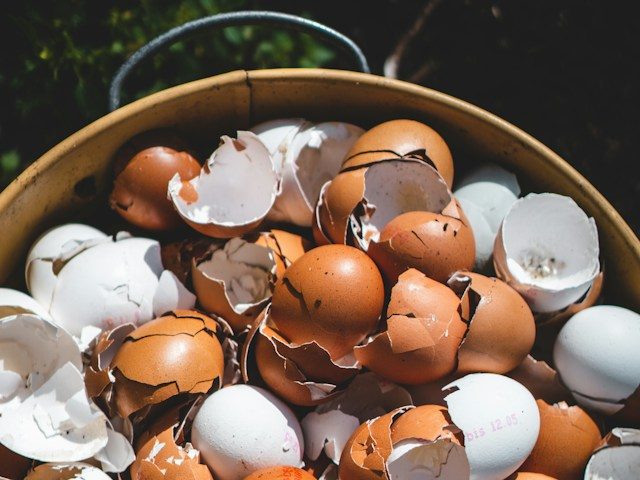
Why is it good to have houseplants in the bedroom?
We might just think that houseplants are nice to have around because of how they look and they give us something alive to look after and care for. But plants can have hidden benefits too that make them perfect for having around in your bedroom. There are a lot of plants out there that purify the air by removing toxins. Although this happens slowly and in low quantities, it can offset toxins that are released from furniture, paint on the walls and those naturally occurring in the air. There are also some plants that actually release oxygen at night, which is great for getting a good nights sleep.
Another thing houseplants are really great at is adding a little humidity to the air through transpiration. Dry air whilst you sleep can cause sore throats, colds and even bad skin. So by adding a few houseplants, it can help boost the humidity.
And lastly, houseplants are known and loved for their calming effect, which is really important to help you get a relaxed night sleep. Create a little bit of zen in your space with our selection of plants below!

Boston Fern
Nephrolepis exaltata
If you want to bring some jungle to your bedroom, then the lush Boston Fern is the go-to! However, looking after them isn’t always easy as they can be a little fussy when grown indoors. There are two main things that your Boston Fern needs; bright sunshine and high humidity. This means you need to be prepared to mist your Fern daily to avoid crispy leaves.
The one downside we find to owning Boston Ferns is that they do shed a lot of leaves so you’ll find yourself tidying up after it quite a lot. But with the right care, they’ll reward you with luscious green wilderness.
Another great thing about Boston Ferns is they are pretty cheap and you shouldn’t run into too much trouble finding them in plant shops around the world.
Find out more in our Boston Fern care guide.

Snake Plant
Sansevieria Trifasciata
The bold and striking leaves of the Snake Plant make it stand out wherever you put it! Not only are they slow-growing, but they transcend upwards so are great for small spaces or that corner of your bedroom you never know what to do with. They have some of the sturdiest leaves or any houseplant, and their sharp leaf tips have given the plant the nickname of mother-in-laws-tongue!
When it comes to care, Snake Plant are super easy to look after, they can adapt to a range of light levels (are great low light plants), prefer dry soil and don’t need much attention in the way of misting or repotting etc. So if you want a low maintenance, sturdy houseplant for your bedroom, then the Snake Plant is your perfect match!
Find out more in our Snake Plant care guide.

Devil's Ivy
Epipremnum aureum
These are pretty unique houseplants because they actually prefer lower-light conditions over anything else, so they are perfect if your bedroom doesn’t get that much natural light. That’s where the name comes from, as they are well acquainted with the darkness. If you have a variegated variety, it will actually start to lose its pattern if placed in too much sunlight. So you don’t need to feel guilty about putting a Devil’s Ivy in a shady spot because it will actually love you for it.
They are also pretty hardy plants in terms of their other care requirements. They don’t need complicated watering schedules or specific pruning so are perfect for any new plant parents. You can’t really go wrong with these at all!
When it comes to styling the Devil’s Ivy plant, shelving is where they thrive as it gives it room to cascade dramatically out of the pot. They can be trained to grow upwards by a wall or moss pole so the option is yours. They are great air-purifiers so are a perfect choice for your bedroom.
Find out more in our Devil's Ivy care guide.

Dragon Tree
Dracaena draco
The Dragon Tree was actually our first ever houseplant and ignited our initial love for caring for indoor plants many years ago. Native to Madagascar, it’s a timeless plant that brings elegance and style to every room. They are also super easy to care for and are great at purifying the air which makes them the perfect entry-level houseplant.
You’ll have a hard time trying to kill a Dragon Tree as they are pretty drought-tolerant and forgiving when it comes to light, temperature levels and humidity so it’ll adapt well to every spot in your bedroom.
Although they can reach up to 6 metres in their natural outdoor habitat, they’ll only ever get to about 1.5/2 metres when grown indoors (and even this will take years and years) so you don’t need to worry about it getting too big to handle.
Find out more in our Dragon Tree care guide.

Peace Lily
Spathiphyllum wallisii
This is a must-have for your bedroom and there’s a reason that Peace Lilies are so popular, and it’s not just because of their incredible white flowers. They are super low maintenance plants that can adapt and thrive in most homes. They can tolerate all light levels which is super rare for houseplants.
Our favourite thing about the Peace Lily is that it really helps us plant parents out by drooping its leaves when it really needs water. This can help you spot underwatering before it’s really a problem. Within minutes of watering, the leaves will perk up – it’s pretty cool! And if we haven’t sold you on the Peace Lily yet, then you should probably know that they are also one of the best plants at purifying the air and removing chemicals so great for the bedroom.
Find out more in our Peace Lily care guide.

Spider Plant
Chlorophytum comosum
Spider Plants are the perfect plant for a houseplant beginner as they are super easy to care for, grow pretty quickly, and produce an abundance of spider babies which can be propagated in seconds.
The best thing about Spider Plants is that you would really have to try to kill them as they adapt to and survive in most environments and don’t mind being a little neglected. They even show you when they need more water by going quite light green. But after a little bit of water, they spring back to full health in minutes.
As your plant matures, you’ll start to see it sprouting little spiderettes which you can choose to remove from the plant to create new Spider Plants. They really are the gift that keeps on giving! And the fact that they are on the NASA list of plants that clean the air make them perfect for the bedroom.
Find out more in our Spider Plant care guide.

English Ivy
Hedera helix
Although they are most commonly known as outdoor plants, you can very successfully grow an English Ivy indoors as long as you give it enough light. We are obsessed with the white variegated English Ivy but if not given enough sunshine, the new leaves will lose all of that variegation.
Also included in the NASA Clean Air Study, the English Ivy is great at removing toxins from the air so we recommend having this in your bedroom for sure! They are also believed to sometimes be able to improve allergy symptoms so as well as looking lush, they have great benefits for us too. They are also super fast-growing plants so you want to place them on a high shelf making sure they have enough space to cascade downwards.
Find out more in our English Ivy care guide.

Rubber Plant
Ficus elastica
The name Rubber Plant comes from the latex in the leaves, which was once used to actually make rubber! They are a great plant to bring a little bit of that rainforest feel right into your home. And whilst they can reach about 30 metres in their native environment, when potted in your home they’ll be much smaller don’t worry!
Caring for your Rubber Plant doesn’t have to be difficult. Good light levels and not too much water are the basics to remember. As they are native to Southern Asia, they love humidity and will really struggle with dry air so regularly misting will keep your plant happy and healthy. Along with all the other plants on the list, they are great at air-purifying and removing toxins and bacteria from the air!
Find out more in our Rubber Plant care guide.

Aloe Vera
Aloe Barbadensis Miller
Although Aloe Vera plants are commonly loved for their gel, they are much more than just their health and beauty benefits, as they make for a super minimalist and forgiving houseplant! Like most other succulents, Aloe Vera plants don’t need much tending to as they thrive in dry coarse potting mix. But it is important that they get a good amount of bright light or will become quite straggly.
As they mature a little, you’ll see lots of little Aloe pups popping up which can be very easily removed from the mother plant and propagated! Aloe Vera plants are actually one of the few plants that releases oxygen at night, rather than carbon dioxide, making them a perfect choice for your bedroom. Aloe plants are super affordable and you can pick them up basically anywhere that sells plants, even supermarkets will often sell them in the summer months.
Find out more in our Aloe Vera care guide.














